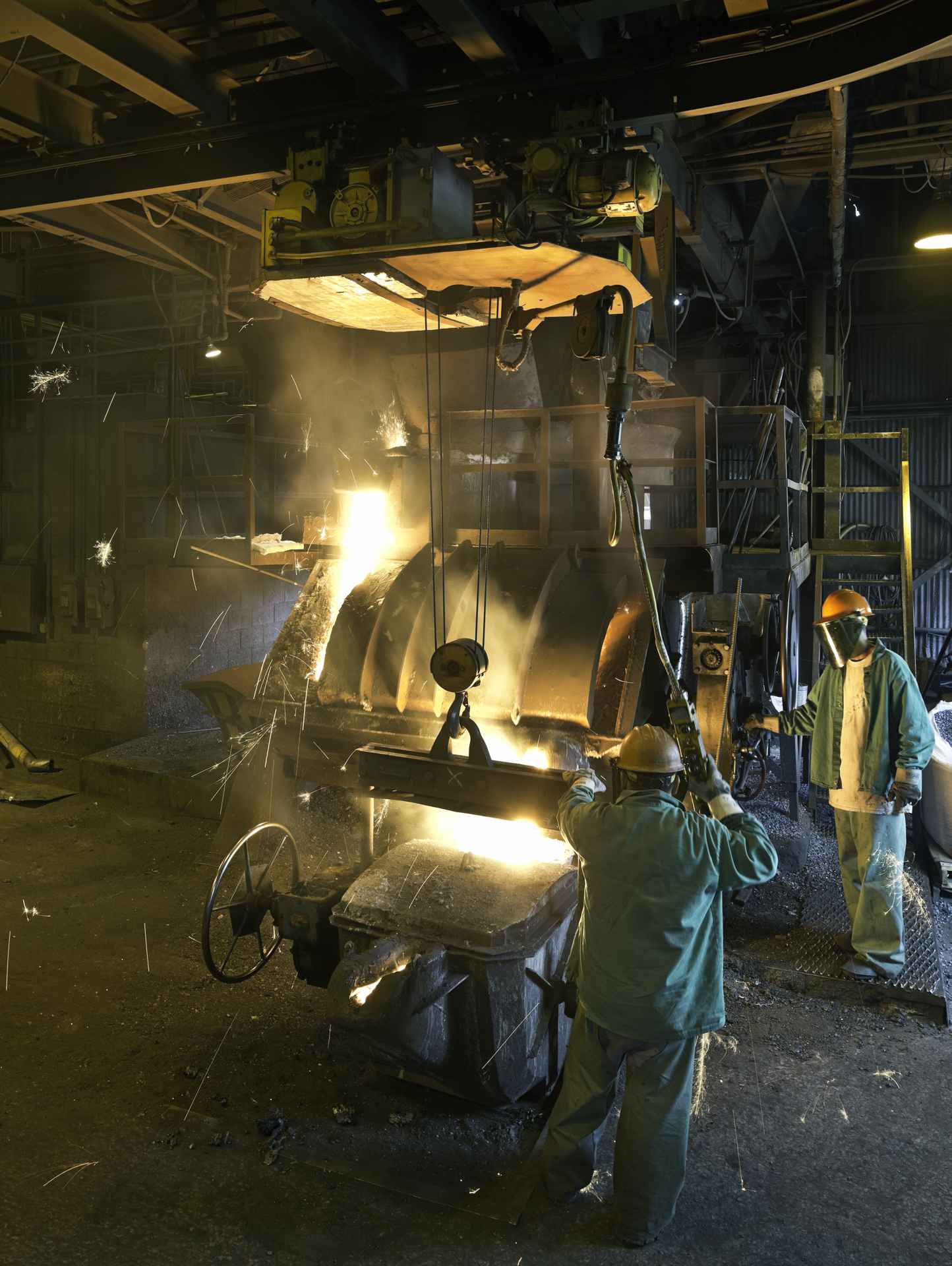Understanding the many different grades/classes of gray iron material helps Acme Foundry build the best, highest quality and most cost-effective metal castings possible for every unique application.
Gray iron materials used in the manufacturing of custom castings are generally cataloged by the minimum tensile strength of each unique metal formulation. These classifications are laid out by the ASTM International standard A48, which divides common gray iron materials into a chart according to tensile strength in megapascals (MPa) or pounds per square inch (psi).
However, in the automotive manufacturing sector, the SAE International standard J431 is used to designate suitable materials specific to cast parts for passenger cars and commercial vehicles. These standards are laid out according to the ratio of tensile strength in comparison to Brinell hardness.
Some of the most common gray iron materials used in the casting industry today include ASTM Class 300 (Grade 45) which is often used for manufacturing gears, cylinder blocks/cylinder heads, as well as heavy duty industrial tools. Other common classes include Class 200 (Grade 30) commonly used for manufacturing molds, gearboxes and housings, as well as Class 150 (Grade 20) commonly used for exhaust manifolds, pipes, and pulleys.
ASTM Gray Iron Classes Explained – Hardness Levels and Tensile Strength Ratings:
Many industries use ASTM’s A48 standard to designate different gray iron materials according to tensile strength. The grades are conveniently named according to tensile strength rating in MPa – e.g. Class 150 gray iron has a tensile strength of 150 MPa, while Class 300 is rated at 300 MPa.
- Class 150 Gray Iron – Tensile Strength: 150 MPa – Lower grades commonly used for casting basic hammers, pipes, bearings, and protective covers.
- Class 250 Gray Iron– Tensile Strength: 250 MPa – Higher tensile strength commonly used for casting gearboxes and housings, machine bases and couplings, and many other high-strength industrial components.
- Class 350 Gray Iron – Tensile Strength: 350 MPa – A high-grade gray iron material used for casting precision bearings, bushings, cams, and high-performance dies.
The SAE International Standard of Gray Iron Grades for the Automotive Manufacturing Industry
In the automotive manufacturing sector, the SAE International standard SAE J431 is used to designate grades of gray iron materials according to tensile strength in relation to Brinell hardness ratings. The grades are named according to tensile strength rating in psi – e.g. SAE G3000 gray iron offers a tensile strength of 30,000 psi.
- SAE Grade G2500 – Minimum Tensile Strength: 25,000 psi (173 MPa) – Brinell Hardness Rating: 170 to 229
- SAE Grade G3000 – Minimum Tensile Strength: 30,000 psi (207 MPa) – Brinell Hardness Rating: 187 to 241
- SAE Grade G3500 – Minimum Tensile Strength: 35,000 psi (241 MPa) – Brinell Hardness Rating: 207 to 255
- SAE Grade G4000 – Minimum Tensile Strength: 40,000 psi (276 MPa) – Brinell Hardness Rating: 217 to 269
Quality American Gray Iron Castings Since 1905
Based out of Coffeyville, Kansas, Acme has provided quality American foundry services for well over a century as one of the nation’s leading manufacturers of gray iron castings. An ISO 9001:2015 certified company, we strive to ensure superior quality and responsive customer service for every project.

